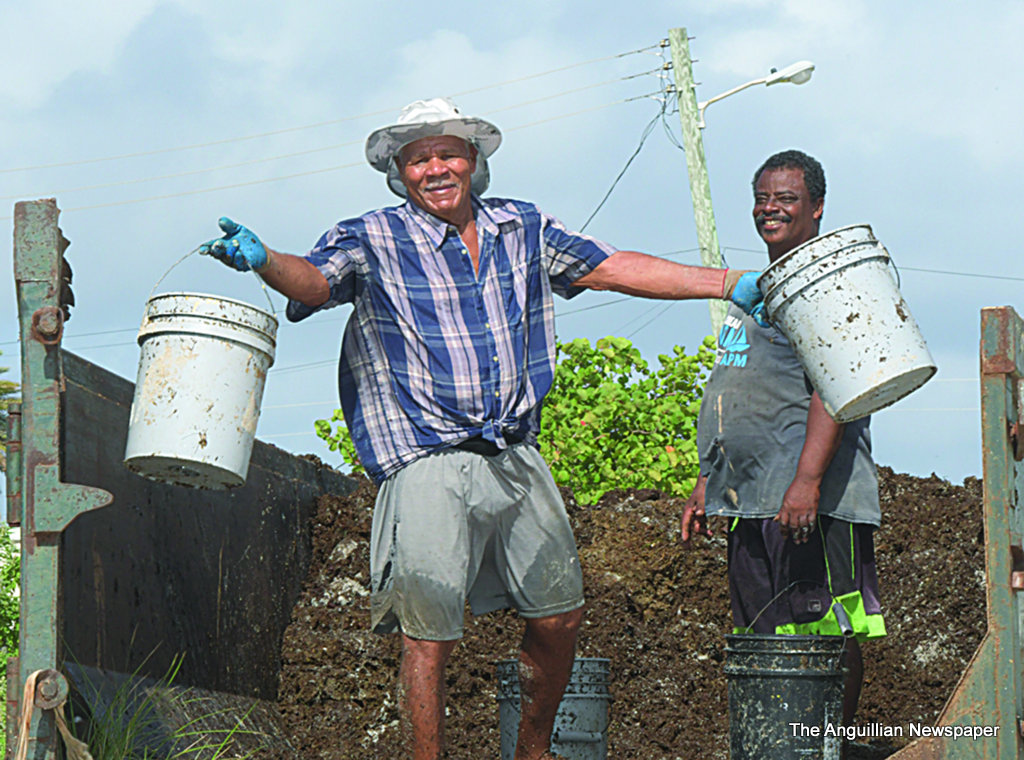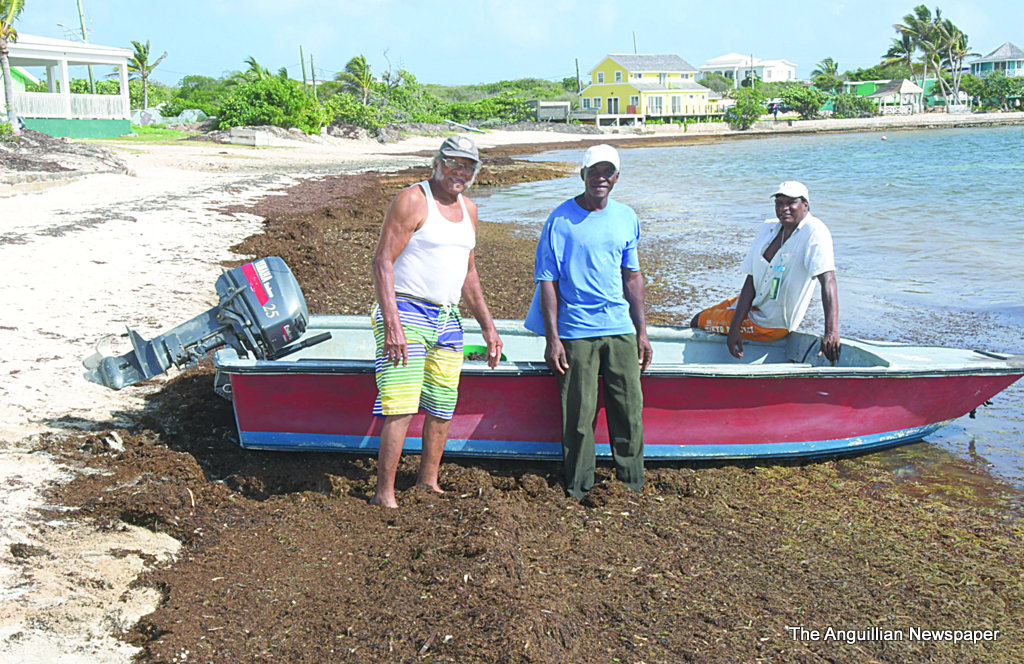
The regular cleaners of the Island Harbour Bay have just embarked on the tedious task of removing, by hand, the mass amount of seaweed that has been littering the beach for several days.
In doing so, they have set an example to other communities in Anguilla where mounds of seaweed, washed ashore on the beaches, are also a big challenge to swimmers and the tourism industry.
The largely Webster, Johnson, Hodge and Smith families at Island Harbour, were joined on Sunday, July 18, by Premier Dr. Ellis Lorenzo Webster, the Elected Representative for District 1, Island Harbour. They were also assisted by a visitor from Nassau, Bahamas, Mark Dillett, who is on vacation in Anguilla to see his wife’s relatives in the district.
Attired for the murky cleaning occasion, Premier Webster told The Anguillian newspaper: “Thank you for publishing those pictures of the beach before. The community here is doing a great job to keep the beach clean. The whole gang has come together and this has become a passion – and the Government appreciates it very much.”
He said that he had requested the Minister of Natural Resources, Mr. Kyle Hodge, to look at the seaweed situation on all of the island’s beaches to determine what could be done about the matter. He explained that the Ministry and Department of Natural Resources, as well as the Anguilla National Trust, were among others involved in the issue.
The Premier noted that Antigua and Barbuda had exported two shipments of seaweed to Finland for research in terms of bio-fuel or fertiliser. He was also aware that the Organisation of Eastern Caribbean States (OECS), of which Anguilla is an Associate Member, had also expressed an interest in addressing the litter situation in the islands, noting the negative effects of the seaweed on the region’s beaches and tourism industry.
Premier Webster said it would be a great help if Anguilla could find a use for the seaweed. He observed that the new President of the Anguilla Community College, Dr. Kenneth Williams, had spoken about his interest in undertaking a research to see how the seaweed problem could be handled.
The Anguillian leader acknowledged the assistance of Belmond Cap Juluca which recently allowed the use of its Maundays Bay beach-cleaning machine to remove seaweed on the Island Harbour Bay. He disclosed that he had spoken to a number of heavy equipment operators to assist with the island-wide environmental problem to diminish its impact on Anguilla’s tourism industry.
Edmead Smith, one of the regular Island Harbour beach cleaners, surveying the extent of the litter on the bay, stated: “There are only a few of us here today and we are taking a longer time to fill the bin, but it is okay. We are doing it. Joseph for Maxwell owns the bin and is taking away the seaweed. I don’t know where he is putting it.”
(Joseph, a multi-faceted businessman, is a noted farmer and will probably allow the seaweed to dry out and decay before applying it to his farmland.)
Meanwhile, among the beach cleaners, at the Island Harbour Bay, was the well-known educator, sports enthusiast and comedian, Colin Johnson. Asked for his comments, he said, laughing loudly: “I wish I could turn all this seaweed into gold for Anguilla.”
Colin was not far off in his humour. Freshly thrown-up by the sea, the moss has a rich yellow colour, resembling a mass of gold. When dried out, however, it is a rich black.










